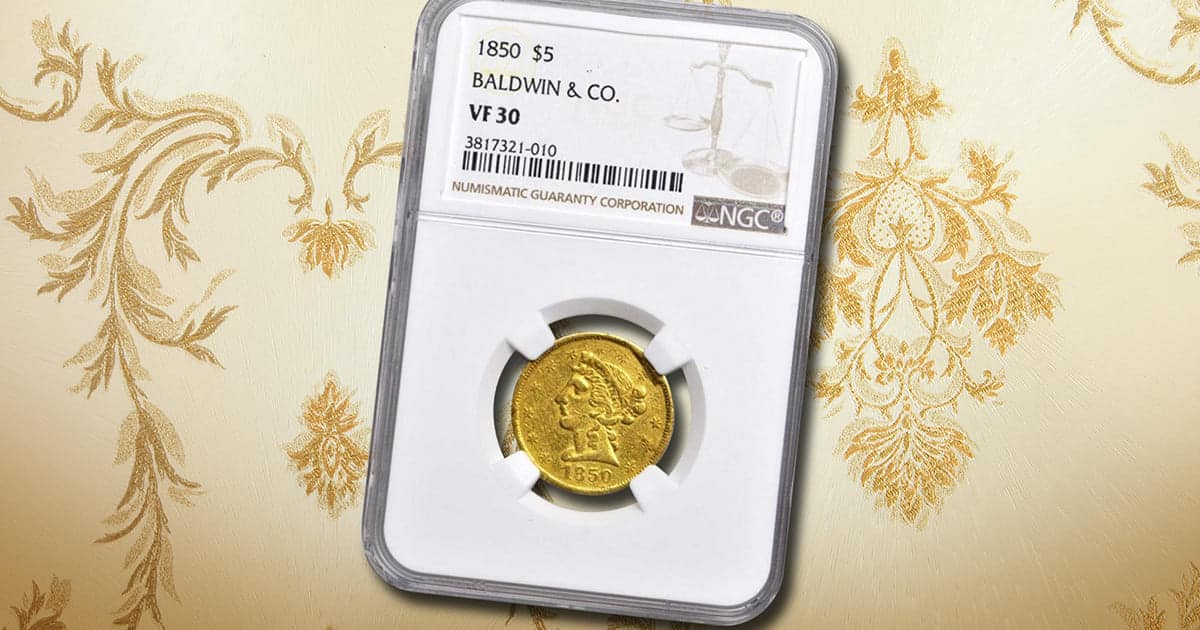
Learn About Edward Dunbar of Dunbar and Company
Edward Dunbar left New York City in December of 1848, heading to San Francisco to seek his fortune. He opened an auctioneer’s office but it was destroyed in the great fire in 1850 that ravaged San Francisco. He then opened a “bank” but the “bank” bought and sold gold dust and ore and, importantly, insured gold dust shipments going to New York City.
He started to also redeem Baldwin and Company’s coins at face value until they were discredited as under the nominal value. Dunbar decided to begin his own coining operations so he bought the necessary equipment and was issuing coins with his name on them.
Like numerous other California private gold coinage, it looked suspiciously similar to the federal issues – perhaps that was done intentionally to make the consumer feel more confident in the coin itself. The obverse depicted Miss Liberty, facing left. Her hair is in a bun at the back and she is wearing a coronet. Instead of “LIBERTY” across it, this says “DUNBAR & Co.” with the date at the bottom and 13 six-pointed stars around the periphery.
The reverse depicts a federal eagle with its wings up spread. The eagle has a patriotic shield covering its body and an olive branch in one talon and 3 arrows in the other. Around the periphery was “UNITED STATES OF AMERICA” and at the bottom, periphery was the denomination “FIVE D.”


When many of the other California private gold coins were assayed, the public reaction was one of disappointment and mistrust. Even though no Dunbar & Company coins were assayed and found wanting in weight or purity, all private gold coins were tarnished by this scandal.
Dunbar took the unusual step of sending his own coins to be privately assayed and when it was completed, his $5.00 gold half eagle was found to be worth $5.13. No matter, the damage had been done and even his coins were being melted by the score. No one could escape the public condemnation that followed, even when their own coins proved to be above full melt value.
Dunbar had hoped that the controversy would subside, but that was not the case. Seeing no way to overcome this problem, Dunbar stopped minting coins. When the debacle continued to plaque those still minting, Dunbar headed back to New York and this time he formed a currency company – Continental Bank Note Company – which was successful enough to be bought out sometime later by the American Bank Note Company.
| Date | Type | Mintage | VF Value | Unc Value |
| 1851 | $5.00 | 4-6 Known | $450,000 | $800,000 |
Expand your collection today and shop our assortment of Pre-1933 U.S. Gold Coins.




